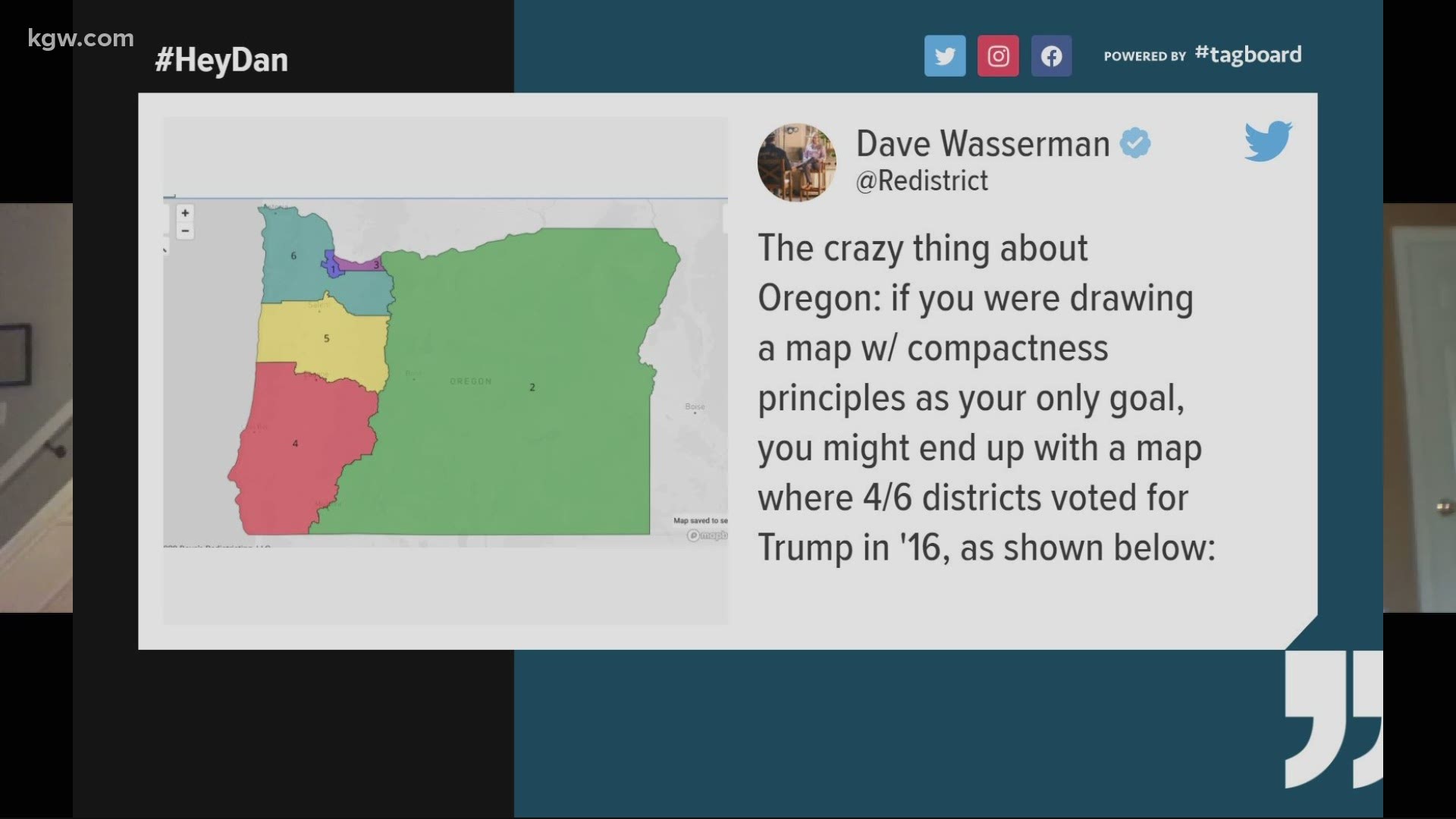PORTLAND, Ore — Oregon will take on the task of redistricting in 2021. Here’s a look at what that means and how it will affect the state.
Redistricting is the process of redrawing the lines of the political districts that represent us. It affects everyone and their voice in our government.
Here’s how it’s supposed to work: every 10 years, the United States does a census. Federal officials count how many people live in Oregon and track where people actually live in the state.
So for example, more people likely moved to Portland in the last 10 years -- than say, one of our rural counties. Then, the feds give that data to the legislature.
A committee of lawmakers uses that to redraw these three maps: the state house districts, the state senate districts and the federal congressional districts. They all must be equal in population to each other.
There's a set number of state legislative districts so lawmakers can only move the boundary lines, not add or subtract districts from the entire state.
They might move more districts into the Portland area because more people live there. And take away some from rural areas, where fewer people live. This could end up affecting whether you're represented by a Democrat or a Republican.
It's a little different for the congressional districts because Oregon is actually expected to get a new seat in Congress for the first time since 1982. That's because so many people have moved here in the past 10 years - compared to other states, that will end up losing seats in Congress.
Lawmakers will have to fit a 6th district into the state while again, making sure they all stay equal in population.
"Oregon’s in a very unique position because it’s gaining a seat for the first time in a long time,” Dave Wasserman, editor of The Cook Report told Dan Haggerty. "Democrats have pretty solid control of the state compared to previous decades. At the same time, Democrats are bottled up in Oregon in Portland and the inner suburbs. It actually would have been possible for Republicans to draw a map if they were in control in which 4 out of Oregon’s 6 districts would have gone for President Trump in 2016 because they could simply draw a fence around Portland and Eugene.
"But assuming Democrats want to draw the sixth seat in their favor they are going to have to get creative,” Wasserman said. “They may need to stretch a number of districts from Portland outward," he said. "I don’t think they will try to eliminate the only Republican seat in the state, but Democrats are going to try to win five, and to do so they may need to draw a district that extends from some neighborhoods in Portland all the way to Idaho."
There's another wrinkle in this whole process. The census data that helps this process has been delayed and so Oregon lawmakers won’t get the information they need until after their July deadline to redraw the lines.
This means the job may fall to Oregon’s newly elected secretary of state. Shemia Fagan told KGW during her campaign that if redistricting falls to her she will outsource it to an "independent commission that meets our diversity and equity goals to make sure that everyone in Oregon is represented"

